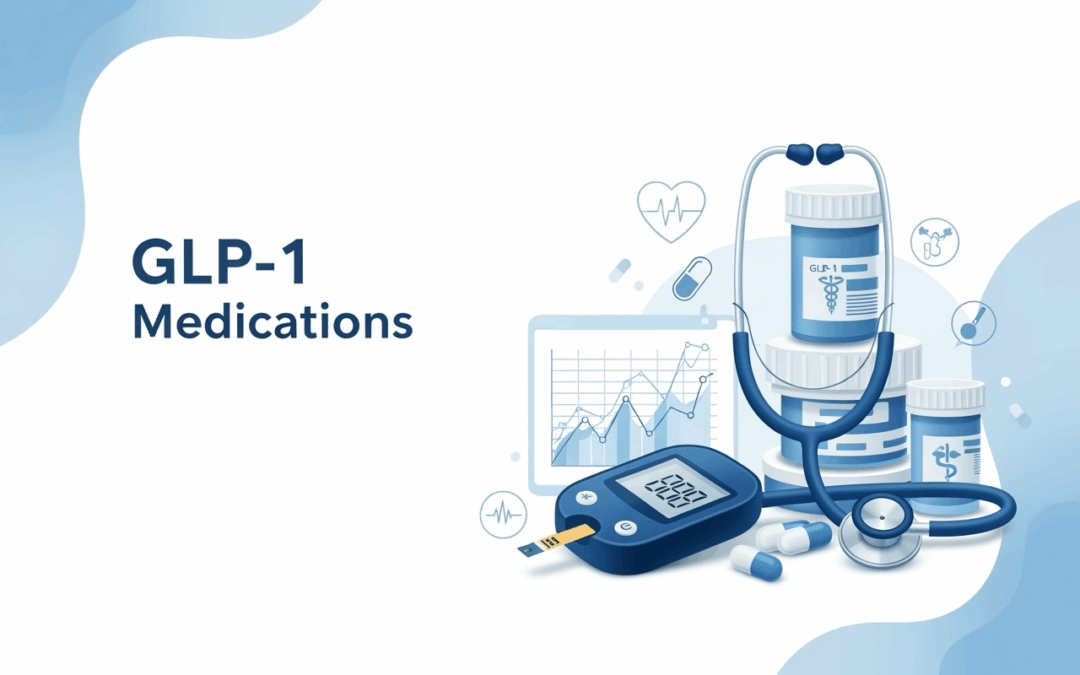The Current Landscape: Why TPAs Need a New Approach
The healthcare landscape has fundamentally shifted with the emergence of GLP-1 receptor agonists like Ozempic. For Third-Party Administrators managing self-funded employer health plans, these medications represent both an unprecedented opportunity for improved member health outcomes and a significant challenge to traditional cost management strategies.
Ozempic (semaglutide) has transcended its original FDA approval for type 2 diabetes management to become one of the most requested medications in employer health plans. This surge in demand, driven by both clinical efficacy and social media influence, has created complex coverage decisions that require sophisticated management approaches.
The financial implications are substantial. Monthly treatment costs ranging from $800 to $1,200 per member translate to annual expenses exceeding $12,000-$15,000 per patient. For TPAs managing large populations, these costs can quickly escalate into millions of dollars in additional pharmaceutical spending.
Understanding GLP-1 Medications: Clinical Foundation and Market Dynamics
GLP-1 receptor agonists work by mimicking naturally occurring incretin hormones that regulate blood glucose levels and appetite. Ozempic’s active ingredient, semaglutide, provides superior glycemic control compared to many traditional diabetes medications while offering significant weight loss benefits as a secondary effect.
The clinical evidence supporting GLP-1 medications is robust. The SUSTAIN clinical trial program demonstrated HbA1c reductions of 1.2% to 1.8%, while the SUSTAIN-6 cardiovascular outcomes trial showed a 26% reduction in major adverse cardiovascular events. These outcomes represent meaningful improvements in both diabetes management and long-term health outcomes.
However, the market dynamics extend beyond clinical efficacy. The GLP-1 medication class includes several options that TPAs must evaluate:
- Weekly Injectable Options: Ozempic (semaglutide), Trulicity (dulaglutide), Bydureon (exenatide ER)
- Daily Injectable Alternatives: Victoza (liraglutide), Byetta (exenatide)
- Oral Formulations: Rybelsus (oral semaglutide)
- Weight Management Specific: Wegovy (higher-dose semaglutide)
The complexity increases when considering that semaglutide is available in different formulations for different indications, creating coverage policy challenges that require careful navigation.
Cost Management Strategies: Beyond Simple Prior Authorization
Traditional formulary management approaches prove insufficient for GLP-1 medications due to their unique cost profile and clinical benefits. Successful TPAs are implementing comprehensive strategies that balance access with fiscal responsibility.
Effective cost management begins with evidence-based coverage criteria that reflect clinical guidelines while considering plan sustainability. These criteria should address specific clinical thresholds, previous medication trials, and documented lifestyle modification attempts. The goal is creating clear, defensible standards that providers understand and members can navigate successfully.
Prior authorization processes require sophisticated design to handle the volume and complexity of GLP-1 requests. Successful implementations include:
- Streamlined approval pathways for members meeting clear clinical criteria
- Step therapy requirements ensuring cost-effective alternatives are tried first
- Quantity limits and monitoring to ensure appropriate utilization
- Regular outcome assessments to demonstrate continued clinical benefit
The most effective TPAs are also implementing specialty pharmacy partnerships to enhance medication management, improve adherence monitoring, and provide comprehensive patient support services.
Managing Off-Label Use and Social Media-Driven Demand
The viral popularity of Ozempic for weight loss has created unprecedented challenges for TPAs. Social media platforms have amplified awareness of the medication’s weight loss effects, leading to increased member requests for coverage of off-label use.
TPAs must navigate the distinction between FDA-approved diabetes management and off-label weight loss applications. While Ozempic is approved only for type 2 diabetes, Wegovy (the same active ingredient at a higher dose) is approved specifically for chronic weight management. This creates coverage policy complexities that require clear communication and consistent application.
Addressing social media-driven demand requires proactive member education strategies. Successful TPAs are implementing comprehensive communication campaigns that explain coverage criteria, highlight alternative weight management resources, and set appropriate expectations about approval processes.
Provider education is equally critical. Many prescribers may not fully understand coverage limitations or appropriate prescribing criteria. TPAs should provide regular updates about coverage policies, offer clinical consultation services, and create easy-to-use prior authorization resources.
Financial Impact Analysis: Total Cost of Care Considerations
While the upfront costs of GLP-1 medications are substantial, TPAs must consider the broader financial implications within a total cost of care framework. The medications’ ability to improve diabetes control and reduce cardiovascular risk may generate long-term savings that offset initial pharmaceutical expenses.
Recent studies suggest that improved diabetes management through GLP-1 medications can reduce hospitalizations, emergency department visits, and diabetes-related complications. For TPAs managing populations with high diabetes prevalence, these savings can be significant over multi-year periods.
However, budget impact analysis requires careful consideration of multiple factors:
- Direct medication costs including rebates and pharmacy fees
- Administrative expenses for prior authorization and utilization management
- Avoided medical costs from improved diabetes control
- Productivity benefits from better health outcomes
The most sophisticated TPAs are implementing predictive modeling to forecast utilization trends and budget impacts across different coverage scenarios.
Regulatory Considerations and Compliance Requirements
The regulatory environment surrounding GLP-1 medications continues evolving, with implications for TPA coverage policies. FDA safety communications, clinical guideline updates, and state insurance regulations all influence coverage decisions.
Recent FDA safety considerations include thyroid cancer warnings, gastrointestinal adverse effects, and pancreatitis risk factors. TPAs must ensure their coverage policies reflect current safety information while maintaining appropriate access for members who can benefit clinically.
State insurance regulations vary significantly in their requirements for diabetes medication coverage. Some states have specific mandates for diabetes medication access, while others provide more flexibility in coverage design. TPAs must navigate these varying requirements while maintaining consistent, evidence-based policies.
The regulatory landscape also includes emerging considerations around value-based care integration and outcome-based contracting with pharmaceutical manufacturers. These arrangements may offer opportunities for risk-sharing and cost management that traditional fee-for-service models cannot provide.
Technology Integration and Data Analytics
Successful GLP-1 management increasingly relies on sophisticated technology platforms that integrate clinical decision support, prior authorization processing, and outcome tracking. The most effective TPAs are investing in systems that provide real-time utilization data, clinical outcome monitoring, and predictive analytics capabilities.
Electronic prior authorization systems can significantly improve processing efficiency while ensuring consistent application of coverage criteria. These systems should integrate with provider electronic health records to streamline the approval process and reduce administrative burden.
Data analytics platforms enable TPAs to track utilization trends, monitor clinical outcomes, and identify opportunities for program improvement. Key metrics include:
- Utilization patterns and trend analysis
- Clinical outcomes for approved members
- Cost-effectiveness measures and budget impact
- Member and provider satisfaction indicators
Advanced analytics can also support predictive modeling for budget forecasting and risk assessment, enabling more sophisticated financial planning and employer communication.
Implementation Framework: Building Sustainable Programs
Developing effective GLP-1 management programs requires systematic implementation that addresses policy development, stakeholder education, and ongoing monitoring. The most successful TPAs follow structured approaches that ensure comprehensive coverage while maintaining cost control.
The implementation process should begin with comprehensive policy development that reflects current clinical evidence and plan objectives. This includes establishing clear coverage criteria, designing efficient prior authorization processes, and creating monitoring protocols for ongoing assessment.
Stakeholder education is critical for program success. Providers need clear information about coverage criteria and approval processes, while members require transparent communication about coverage limitations and appeal procedures. Ongoing education ensures consistent understanding and appropriate utilization.
Monitoring and adjustment processes enable continuous program improvement based on utilization data, clinical outcomes, and stakeholder feedback. Regular policy reviews ensure that coverage criteria remain current with evolving clinical evidence and regulatory requirements.
Future Considerations and Market Evolution
The GLP-1 medication market continues evolving with new drug approvals, indication expansions, and potential biosimilar development. TPAs must prepare for these changes while maintaining program stability and predictable costs.
Emerging therapies include dual GLP-1/GIP receptor agonists that may offer superior efficacy, oral formulations that improve convenience, and combination therapies that address multiple aspects of diabetes management. Each new option requires evaluation within existing formulary strategies and coverage frameworks.
Market competition may eventually lead to price reductions, though significant generic competition remains years away due to the complex nature of these biological medications. TPAs should monitor pricing trends and negotiate favorable arrangements where possible.
Value-based care integration represents a significant opportunity for innovative TPAs. Outcome-based contracts with manufacturers, risk-sharing arrangements, and integration with comprehensive diabetes management programs may offer new approaches to cost management while improving member outcomes.
Conclusion: Strategic Positioning for Long-Term Success
The rise of GLP-1 medications like Ozempic represents a fundamental shift in diabetes management that requires sophisticated responses from TPAs. Success requires balancing clinical evidence, cost considerations, and member access within comprehensive management frameworks.
TPAs that proactively develop evidence-based policies, invest in appropriate technology infrastructure, and maintain focus on total cost of care will be best positioned to navigate this challenging landscape. The key lies in creating sustainable programs that ensure appropriate access while maintaining fiscal responsibility.
As the market continues evolving, TPAs must remain agile and responsive to changing conditions. Regular policy reviews, stakeholder engagement, and data-driven decision-making will be essential for long-term success in managing these high-impact medications while serving the needs of employer clients and plan members effectively.
The future of GLP-1 management will likely involve increased integration with value-based care models, enhanced digital health tools, and more sophisticated utilization management strategies. TPAs that prepare for these changes while maintaining focus on clinical outcomes and cost-effectiveness will emerge as leaders in this evolving healthcare landscape.

